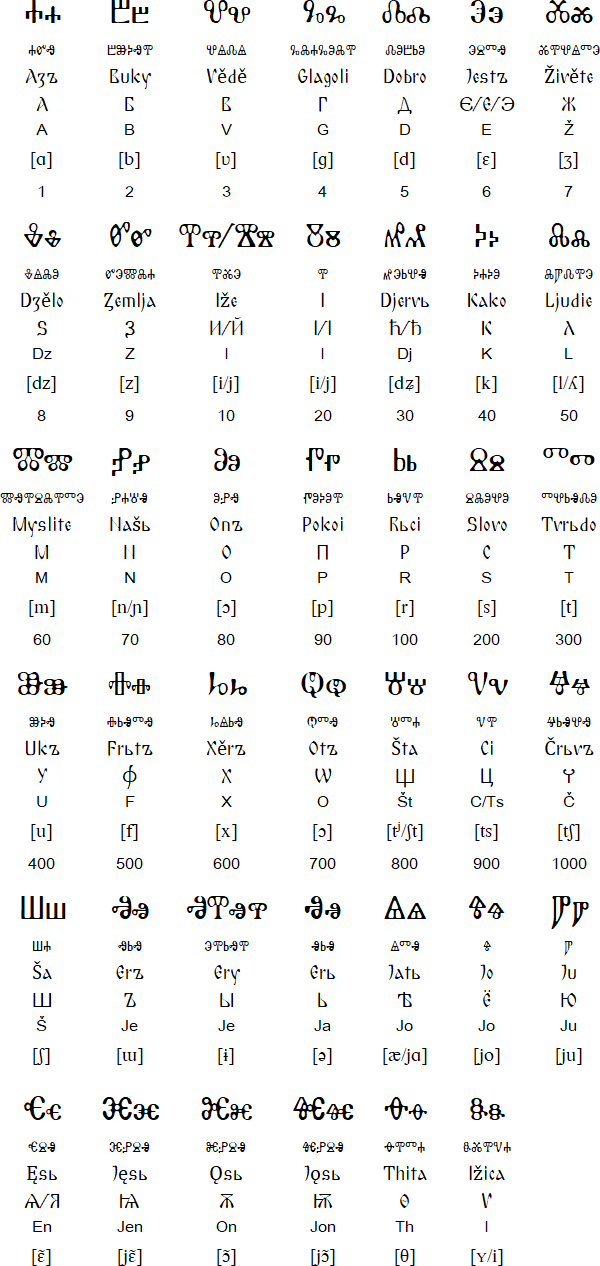Glagolitic alphabet
Origin
The Glagolitic alphabet was invented during the 9th century by the missionaries
St Cyril (827-869 AD) and St Methodius (826-885 AD) in order to translate the
Bible and other religious works into the language of the Great Moravia region.
They probably modelled Glagolitic on a cursive form of the
Greek alphabet, and based their translations on a
Slavic dialect of the Thessalonika area, which formed the basis of the literary
standard known as Old Church Slavonic.
Old Church Slavonic was used as the liturgical language of the Russian Orthodox
church between the 9th and 12th centuries. A more modern form of the language,
known as Church Slavonic, appeared during the 14th century and is still used
in the Russian Orthodox church.
Glagolitic alphabet

Cursive version of the Glagolitic alphabet

Cursive Glagolitic provided by Igor Kusin
Links
Information about the Glagolitic alphabet
http://en.wikipedia.org/wiki/Glagolitic_alphabet
http://www.bulgaria.com/welkya/kritika/slave2.html
http://www.hr/darko/etf/et03.html
The Budapest Glagolitic Fragments – two fragments from a parchment manuscript containing
nine lines of text from the Old Slavonic translation of the Life of St Symeon Stylites
written in round glagolitic script:
http://userweb.port.ac.uk/~cleminsr/introd.html
Information about St Cyril and St Methodius
http://en.wikipedia.org/wiki/Saint_Cyril
http://en.wikipedia.org/wiki/Saint_Methodius
Free Glagolitic fonts
http://www.wazu.jp/gallery/Fonts_Glagolitic.html
http://www.croatianhistory.net/etf/gl-font.html
ALPHABETUM – a Unicode font
specifically designed for ancient scripts, including classical
& medieval Latin, ancient Greek, Etruscan, Oscan, Umbrian,
Faliscan, Messapic, Picene, Iberian, Celtiberian, Gothic, Runic,
Old & Middle English, Hebrew, Sanskrit, Old Nordic, Ogham,
Kharosthi, Glagolitic, Old Cyrillic, Phoenician, Avestan, Ugaritic,
Linear B, Anatolian scripts, Coptic, Cypriot, Brahmi, Old Persian cuneiform:
http://guindo.pntic.mec.es/~jmag0042/alphabet.html
